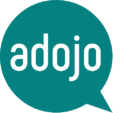Native Advertising as a Channel for Lead Generation
- adojo GmbH
The possibilities for generating leads and orders through online marketing are diverse. Depending on what product or service you offer, certain channels may be more or less suitable. It can be worthwhile to continuously explore new ways to reach your target audience online. A current example of this is Native Advertising as a channel for lead generation.
What is Native Advertising?
Native Advertising refers to ads placed in a familiar environment for the consumer, making them not immediately recognizable as ads
 The form and design of these ads often resemble the traditional articles on the website (also called placement) where they are displayed. These image-text ads blend into the editorial content of the website, making them native to the editorial environment of the respective (news) portal and distinguishable only by the label “Ad” or “Advertisement”.
The form and design of these ads often resemble the traditional articles on the website (also called placement) where they are displayed. These image-text ads blend into the editorial content of the website, making them native to the editorial environment of the respective (news) portal and distinguishable only by the label “Ad” or “Advertisement”.
This makes it difficult for the reader to notice the difference. By presenting ads in the format of an editorial article, companies and their products are positioned within the reach of reputable publishers, leveraging their audience.
How does Native Advertising work?
The basic setup of Native Advertising consists of an advertising company (the advertiser) that uses a Native Advertising network to generate leads for its products and services through informative and creative content on publisher sites.
Native Advertising networks include various providers such as Taboola and Outbrain, which have built ad networks for Native Advertising. They act as intermediaries between (editorial) websites offering ad space for Native Ads and companies that produce content and want to promote it through Native Advertising.
Native Advertising as a Channel for Lead Generation adojo GmbH September 22, 2020 The possibilities for generating leads and orders through online marketing are diverse. Depending on what product or service you offer, certain channels may be more or less suitable. It can be worthwhile to continuously explore new ways to reach your target audience online. A current example of this is Native Advertising as a channel for lead generation. What is Native Advertising? Native Advertising refers to ads placed in a familiar environment for the consumer, making them not immediately recognizable as ads. The form and design of these ads often resemble the traditional articles on the website (also called placement) where they are displayed. These image-text ads blend into the editorial content of the website, making them native to the editorial environment of the respective (news) portal and distinguishable only by the label “Ad” or “Advertisement”. This makes it difficult for the reader to notice the difference. By presenting ads in the format of an editorial article, companies and their products are positioned within the reach of reputable publishers, leveraging their audience. How does Native Advertising work? The basic setup of Native Advertising consists of an advertising company (the advertiser) that uses a Native Advertising network to generate leads for its products and services through informative and creative content on publisher sites. Native Advertising networks include various providers such as Taboola and Outbrain, which have built ad networks for Native Advertising. They act as intermediaries between (editorial) websites offering ad space for Native Ads and companies that produce content and want to promote it through Native Advertising. This type of Native Advertising is paid media, meaning there are costs associated with placement. However, the billing is not in the usual CPC (Cost per Click) unit like Google Ads advertisments but is calculated per CPM (Cost per Mille), i.e., cost per thousand impressions. The German equivalent is TKP, the so-called Thousand Contact Price.

In Native Advertising, so-called “frontloaded campaigns” are usually created, for which a “learning fee” should be considered, especially at the beginning, to test various publishers and ad variations in A/B testing and find the best variant in terms of conversion and click costs. Since this type of campaign particularly entices with its clickbait titles and creative content, the principle of “The image is important, the headline is more important” applies to content creation.
Native Ads are placed on the page of an external publisher and link to content on a different domain. Often, so-called “prelanders” (self-built pages with a short article) are used. These prelander pages are still outside the company’s website and serve storytelling purposes. Ultimately, users should be guided from the prelander to a lead landing page of the company to perform the desired conversion.
Advantages and Benefits of Native Advertising
In addition to increasing reach by selecting websites that are interesting for the target groups, Native Advertising offers several other significant advantages. By embedding in a perceived serious environment, the present ad spaces gain high user trust.
With this form of online content marketing, the transition to advertising is made easier for website users by blending original content from the publisher’s site with advertisements. The visual embedding of ads in their native environment often makes them perceived as full articles and integrates them into the natural reading flow. Because they are in the relevant thematic field, they appear less intrusive than, for example, traditional display marketing banners.
Readers are not only presented with blunt advertising messages but are directed to websites that usually offer high-quality content with real added value. This draws the reader’s attention to the advertising company’s content.
The advertiser has full control over the content and thus the opportunity to score with high-quality content. Ideally, an informative and interesting advertising text is written, which, due to its design similar to an editorial article, stays longer in the user’s memory.
Criticism & Concerns about Native Advertising
Native Advertising is a controversial form of advertising with differing opinions from both users and marketing managers. To prevent Native Advertising from being considered stealth advertising or causing confusion, several criteria must be met. For legal reasons and to maintain the credibility of the advertisement and the website, an ad must be labeled with “Advertisement”. This makes it distinguishable from editorial content upon closer inspection. However, the legal labeling requirement is addressed in varying forms and degrees. Opponents of Native Advertising argue that it is a deliberate concealment if terms like “Sponsored Post”, “A Service by”, “In Cooperation with”, etc., are used instead of “Advertisement”. The legal perspective on separating content and advertising is regulated in Germany in the Press Code.
Conclusion on Native Advertising
Ultimately, Native Advertising should not function by having the ads unrecognized and clicked on, but by offering users valuable content regardless of whether it is an advertisement. Proponents see it as an ideal way to distribute high-quality and relevant content in content marketing. Even reputable sites like Spiegel Online are experimenting with Native Ads to establish another potential revenue source through Native Advertising in the future.
Would you like to learn more about Native Advertising and find out how you can use this form of advertising for your product/service? Contact us at info@adojo.de or call +49 911 24 030 050
